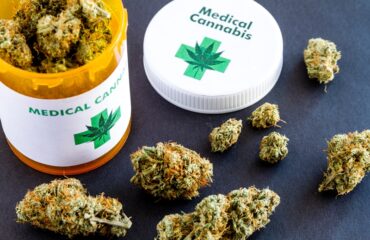What About “Medical Marijuana”?
“Lies, damned lies and statistics” is a phrase sometimes attributed to Benjamin Disraeli but certainly popularized by Mark Twain. I would add to that “lies, damned lies and scientific studies.” As discerning readers know, not all studies should be given equal weight and some are more reliable than others. The funding source is one place to look for bias as is the credentials of the authors. Whether or not the study or paper is peer reviewed is another way to encourage reliability. When it comes to the study of and reports on marijuana, there are publications all over the place.
I set out to see what, if any, reliable information there was on the medical properties of marijuana. As can be imagined, there were studies with wide-ranging results. I trust sources such as the National Institute of Health, National Institute on Drug Abuse, UCLA’s Integrated Substance Abuse Programs, the American Medical Association, the American Society of Addiction Medicine and similar sources. After exhaustive research and study, I have come to several conclusions about the medicinal value of marijuana.
How Does Marijuana Work?
Marijuana contains over 60 cannabinoids, one of which is ∆-9-tetrahydrocannabinol (THC), the property that causes a user to get “high.” This effect is the result of triggering receptors in parts of brain that influence pleasure, memory, thinking, concentration and coordination. THC’s molecular structure is similar to that of neurotransmitters that affect cannabinoid receptors and can affect pain, appetite and vomiting reflex. Marijuana can cause both physical and psychological dependence although the risk is relatively low (9%). The risk for dependence can go up dramatically if the user has suffered childhood trauma or is predisposed to mental health issues such as schizophrenia.
Marijuana’s Medical Potential: Research Evidence
Medical marijuana has been used as a smokescreen for legalization for 35 years. In a well-documented quote, NORML’s* legal counsel, Keith Stroup said, “We will use [medical marijuana] as a red-herring to give marijuana a good name.”
Good research has shown that the medical properties of marijuana can reduce nausea, stimulate appetite, reduce pain, help control muscle spasms, reduce tics as is found in Tourette’s Syndrome and there is some indication that it can reduce convulsions caused by childhood epilepsy although this has yet to be properly researched and proven. Even if this is so, should we promote the use of smoked marijuana to address these conditions? Reasonable sources such as the AMA say, “No.” Two FDA-approved drugs, dronabinol and nabilone, contain THC. The United Kingdom, Canada, and several European countries have approved nabiximols (Sativex®), a mouth spray containing THC and CBD. It treats muscle control problems caused by MS and it is currently undergoing clinical trials here in the U.S.
THC medications have advantages over medical marijuana in that 1) they are FDA approved, 2) there is a standardized medical formulation, 3) they are pure, 4) they are not smoked and 5) there is standardized dosing. Additionally, new medications are far more effective than medical marijuana, for instance, in reducing nausea and vomiting after chemotherapy.
In addition to THC, marijuana contains Cannabidiol (CBD) which has been used for medical purposes. Since CBD does not cause a “high,” it has been bred out of most marijuana plants. In one study, over 90 percent of samples contained less than 0.1 percent CBD.
Who Uses Medical Marijuana?
In California, the first state to legalize medical use, 95% of “patients” were using the drug before they applied for medical marijuana cards. Very few people report serious medical conditions as a reason for medical use. In Colorado, the first state to legalize recreational use, 2% reported cancer, less than 1% reported HIV/AIDS, and 1% reported glaucoma as their reason for using medical marijuana. In Oregon, these numbers are less than 4% for cancer, less than 2% for HIV/AIDS, and 1% for glaucoma.
More study needed
Public opinion favoring legalization has gotten ahead of the science when it comes to marijuana policy. As reported by Pew Research Center, as of April 2014, 54% of those surveyed supported legalization, up from 24% in 1980. State legislative changes have become “medicine by popular vote” rather than the rigorous scientific testing system devised by the FDA. There are suggestions that marijuana use can trigger the onset of schizophrenia, cause birth defects in pregnant women, reduce IQ, take away motivation in teens and other extremely undesirable results. Because there has not been sufficient rigorous scientific testing, there is much more we don’t know about marijuana as medicine that what we do. It’s time to stop, pause, study and only then make policy decisions regarding medical use or full legalization. We need to put the brakes on this path of reactionary decisions based on too few facts. Let’s put everything on hold long enough to be able to make good decisions that are scientifically based and are not harmful to our population.
*National Organization for the Reform of Marijuana Laws founded in 1970 is the oldest group advocating for the full legalization of marijuana in the United States.
Get more articles like this
in your inbox
Subscribe to our mailing list and get the latest information and updates to your email inbox.
Thank you for subscribing.
Something went wrong.










Excellent commentary. So refreshing to see comments that are based on scientific facts, reason and common sense.